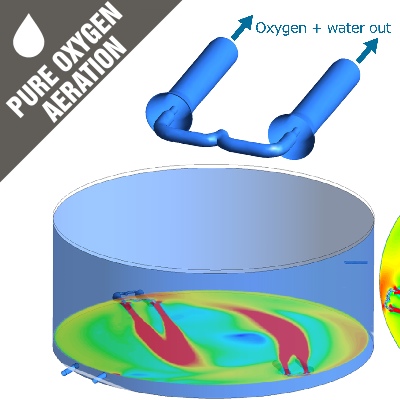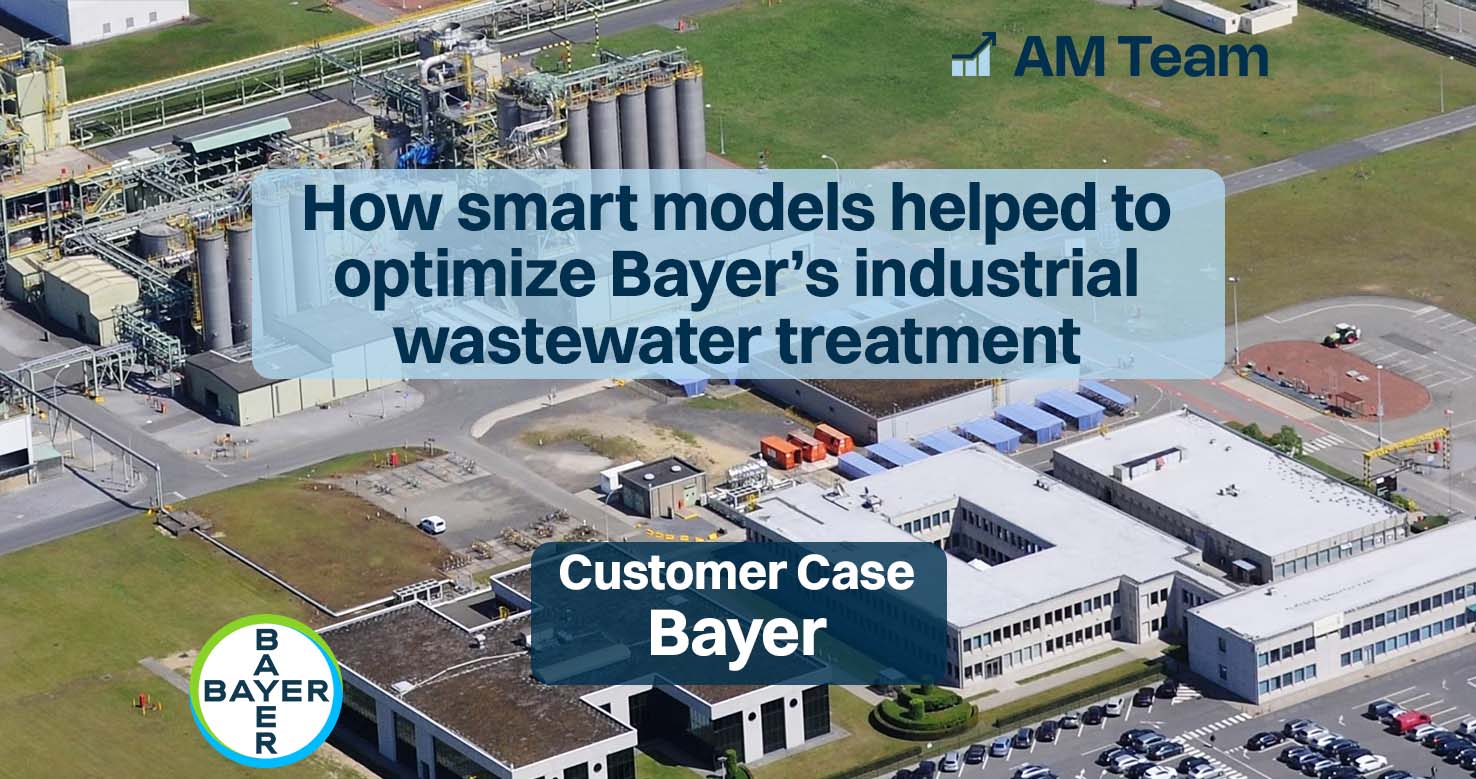The digital twin of the Linköping ozonation plant (Sweden)
A full digital copy of the real Linköping ozonation plant was built to predict pharmaceuticals removal. Different ozone dosing strategies were tested to maximise removal and minimise costs.

The Linköping wastewater treatment plant was the first in Sweden to install a full-scale ozonation facility for the removal of trace organic contaminants (TrOCs),mainly pharmaceuticals. Pilot tests preceded full-scale construction. Much of the work done by Tekniska verken i Linköping happened within the framework of the European CWPharma project. The results of this case study were presented publically during the project's closing webinar.

Based on the AMOZONE simulation model, a digital copy (i.e. digital twin) of the real plant was built to test various operational strategies that are very easy to test with the model, but not with the real plant. For example:
- Can operational costs be saved using a different control strategy?
- What is the impact of effluent nitrites?
- What would be the removal of theTrOCs that could not measured?




The real and digital plant are depicted in Figure 1. The sidestream injection system was included in the AMOZONE model.

Figure 1: Sweden's first full-scale ozonation facility for TrOC removal (left) and the digital AMOZONE copy (right)
A full year of full-scale operation was simulated with the digital twin, and model outcomes were compared with the real full-scale data. As shown in Figure 2, the change in UV absorbance (a measurement related to organic matter) was very well predicted, while the ozone dose varied significantly.

Figure 2: Predicted (line) UV254 absorbance agreed very well with the measured values at full-scale (brown dots)
The power of AMOZONE in predicting the removal of various pharmaceuticals is illustrated in Figure 3. Excellent results were obtained because the model takes into account both ozone and hydroxyl radical (HO*) based removal for each individual TrOC. This is globally unique.

Figure 3: Predicted TrOC removal (orange) (APIs = active pharmaceutical ingredients) agreed extremely well with the measured values (green),despite the complexty and dynamic character of a full-scale ozonation plant
The validity of the model was directly proven by comparing all pilot-scale and full-scale results with the model outcomes on one graph (Figure 4).

Figure 4: The global comparison between model outcomes and measured data across all pilot- and full-scale runs. The orange data points represent simulated data from a Dutch plant (the Soerendonk case study).
'What-if' testing with the model: virtual experiments that are impossible to run with the real plant
Ultimately, the model was used to explore and compare additional operational strategies to screen for cost saving opportunities. The impact of nitrites was quantified by running the model 'without any nitrites'. Further, an alternative operational strategy based on deltaUV was tested (another ozone dosing strategy compared to DOC proportional dosing). Nitrite mitigation in the upstream biological process might be an option worht screening given the significant costs associated with direct nitrite ozonation (> 10% of the plant OpEx).

Figure 5: The simulated ozone dose in four different scenarios: the regular operation (DOC proportional, solid lines) and the modified plant control with deltaUV (dotted lines),both with (brown) and without (red) impact of nitrites.
Conclusions
- Additional operational scenarios could be tested without any additional measurements or data collection
- The AMOZONE model could predict much more TrOCs than what could be measured, and for the measured ones, predictions were excellent
- AMOZONE has the potential to completely replace onsite piloting, drastically reduce expensive analyses, and help designing better plants
Contact us
Suggested Projects


Subscribe to our newsletter








